This article was co-authored by wikiHow staff writer, Jessica Gibson. Jessica Gibson is a Writer and Editor who's been with wikiHow since 2014. After completing a year of art studies at the Emily Carr University in Vancouver, she graduated from Columbia College with a BA in History. Jessica also completed an MA in History from The University of Oregon in 2013.
There are 7 references cited in this article, which can be found at the bottom of the page.
This article has been viewed 65,976 times.
Learn more...
It's easy to tune out the in-flight safety demonstration when you're flying on a plane, but the crew is giving you valuable information. If you fly frequently or just want more details on what to do when your plane hits turbulence, you'll probably be told to brace—get into a safe position that protects your head and limbs. Learn the correct brace position so you feel prepared and you protect yourself from serious injury. You probably have questions about when to brace or about technique, so look for your answer below.
Steps
How do you do the brace position?
-
1Tuck your chin down and bend forward. Check that your seat belt is buckled and tight across your lap. Then, lower your head so your chin is near your chest and bend your whole body forward as if you're rolling into a ball.[2]
- Drawing your head down prevents your head from jerking back suddenly.
-
2Put your hands on your head and press your head against the seat in front of you. Place your hands on the back of your head and tuck your elbows close to your sides. Put your head up against the seat that's in front of you so it will cushion any impact.[3]
- Remember, it's really important to bend forward so you reduce the distance between your head and the seat in front of you. Don't sit up in your seat and just bend your head over or you could really injure yourself.
-
3Keep your feet flat on the floor with your legs tucked slightly rearward. During impact, your feet will slide forward and keep moving even once the plane stops. To protect your legs and feet, plant your feet flat and pull your legs back so your feet are right below your knees.[4]
- Don't stretch your feet in front of you, even if you keep them flat. Your legs will continue to slide forward so you want them as far back as possible when you brace.
Why is it important to assume the brace position in a crash?
-
1It keeps your limbs close to your torso so they don't flail. This may not sound important, but if your legs and arms are swinging around during a crash, they could hit the chair in front of you or another passenger. Keeping your limbs tucked close prevents flailing and makes it more likely that you can survive the impact.[6]
-
2The brace position softens any impact you might have during a crash. If you don't brace and you're sitting straight up, your body will jerk forward and hit the seat or wall in front of you. Bracing brings you closer to the chair or wall so there's less momentum—this means you won't hit the surface as hard and won't get injured as badly.[7]
- Airplane seats are also designed to absorb shock in the event of a crash. Airlines are constantly testing and redesigning seats to offer maximum protection to their passengers.
Community Q&A
-
QuestionIs it true that the brace position increases the risk of death?
 Community AnswerNo, this is not true. The brace position is implemented on many airlines as research has concluded that it is more likely that passengers that adopt this position will fare better than those who do not. If instructed to adopt the brace position by a member of cabin crew, on many airlines you must follow the instruction regardless of personal beliefs or opinions.
Community AnswerNo, this is not true. The brace position is implemented on many airlines as research has concluded that it is more likely that passengers that adopt this position will fare better than those who do not. If instructed to adopt the brace position by a member of cabin crew, on many airlines you must follow the instruction regardless of personal beliefs or opinions. -
QuestionWhat is the best position for side-facing seats on a smaller jet aircraft?
 Community AnswerTry to angle yourself so that your legs are sticking out of the two sides of the side-facing seats. One person will be facing the way the plane is going down, and the other will be facing the back. Now, assume a normal brace position.
Community AnswerTry to angle yourself so that your legs are sticking out of the two sides of the side-facing seats. One person will be facing the way the plane is going down, and the other will be facing the back. Now, assume a normal brace position. -
QuestionWhat is the purpose of the brace position?
 HappyWikiCommunity AnswerThe brace position will protect you on impact for debris, and most importantly, the impact itself. It will prepare your body for the lurch.
HappyWikiCommunity AnswerThe brace position will protect you on impact for debris, and most importantly, the impact itself. It will prepare your body for the lurch.
Warnings
- Always follow the cabin crew's instructions and stay in the brace position until they direct you it's safe to sit up.[12]⧼thumbs_response⧽
References
- ↑ https://flightsafety.org/ccs/ccs_may_june98.pdf
- ↑ https://www.flightsafetyaustralia.com/2018/08/the-brace-position-what-passengers-need-to-know/
- ↑ https://www.icao.int/safety/airnavigation/OPS/CabinSafety/Cabin%20Safety%20Library/Transport%20Canada%20AC_700-036%20on%20Brace%20Position.pdf
- ↑ https://pubmed.ncbi.nlm.nih.gov/9773899/
- ↑ https://www.icao.int/safety/airnavigation/OPS/CabinSafety/Cabin%20Safety%20Library/Transport%20Canada%20AC_700-036%20on%20Brace%20Position.pdf
- ↑ https://www.icao.int/safety/airnavigation/OPS/CabinSafety/Cabin%20Safety%20Library/Transport%20Canada%20AC_700-036%20on%20Brace%20Position.pdf
- ↑ https://www.flightsafetyaustralia.com/2018/08/the-brace-position-what-passengers-need-to-know/
- ↑ https://www.icao.int/safety/airnavigation/OPS/CabinSafety/Cabin%20Safety%20Library/Transport%20Canada%20AC_700-036%20on%20Brace%20Position.pdf
- ↑ https://www.faa.gov/travelers/fly_children/
About This Article
If you ever see the seatbelt sign flashing on your flight or are told by your flight attendant to brace for impact, tuck your feet beneath your seat and keep them flat against the floor. If you are in an economy seat, lean forward so that your head is touching the back of the seat in front of you. Then, link your fingers on top of your head and position your forearms so they are covering your face in case of debris. For more about how to assume the brace position in a first-class seat, scroll down!
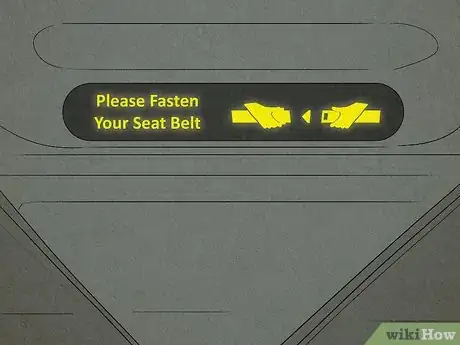
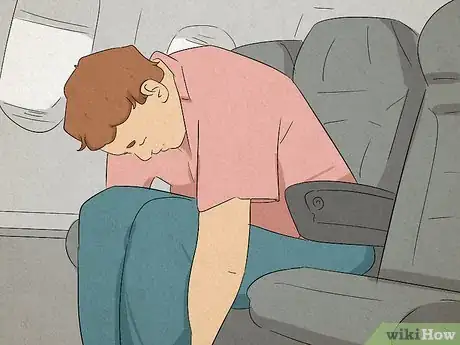

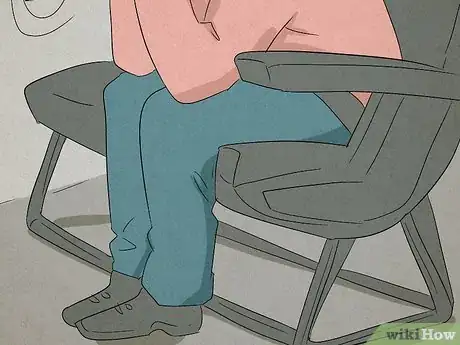



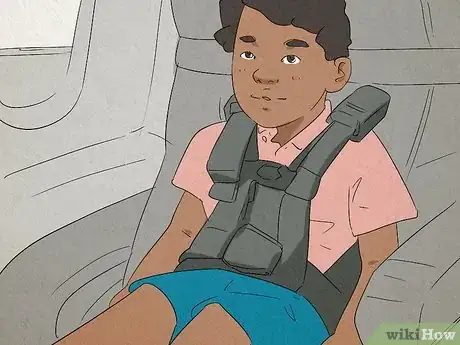
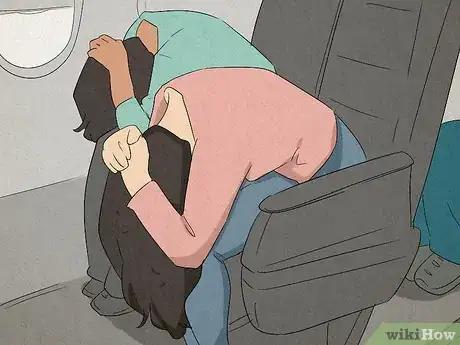
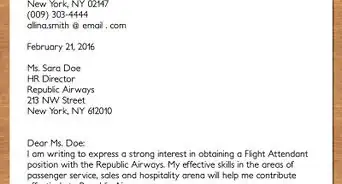
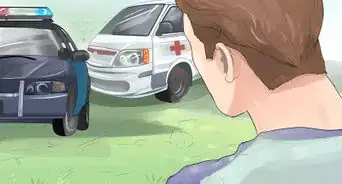

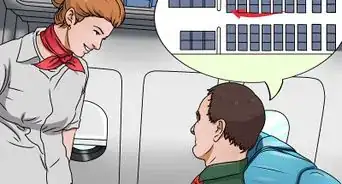




















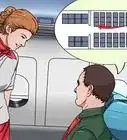



































Medical Disclaimer
The content of this article is not intended to be a substitute for professional medical advice, examination, diagnosis, or treatment. You should always contact your doctor or other qualified healthcare professional before starting, changing, or stopping any kind of health treatment.
Read More...